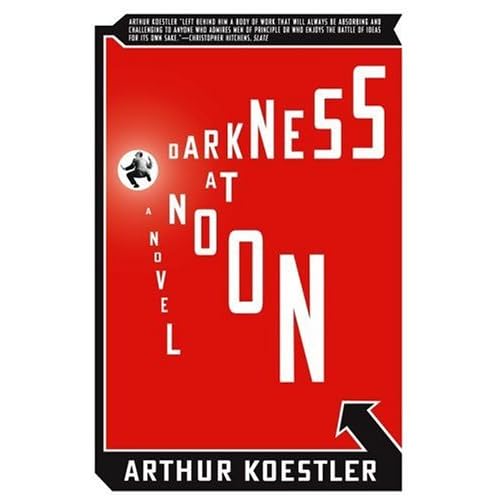 I just finished Darkness at Noon, Arthur Koestler's novel about Stalin's purges. Virtually all of the action in the book takes place in prison: at the very beginning, the protagonist, Rubashov, hero of the Civil War and import personage in the Communist Party, is arrested and hauled off to jail. As you can guess, he never gets out again. This book has a justified reputation as one of the classics of 20th Century literature, and you should read it if you have not; but that's not why I'm writing this post. I'm writing because of Koestler's description of how the prisoners, all of whom were in solitary confinement except when taken outside for twenty minutes of exercise or to the prison offices for interrogation:
I just finished Darkness at Noon, Arthur Koestler's novel about Stalin's purges. Virtually all of the action in the book takes place in prison: at the very beginning, the protagonist, Rubashov, hero of the Civil War and import personage in the Communist Party, is arrested and hauled off to jail. As you can guess, he never gets out again. This book has a justified reputation as one of the classics of 20th Century literature, and you should read it if you have not; but that's not why I'm writing this post. I'm writing because of Koestler's description of how the prisoners, all of whom were in solitary confinement except when taken outside for twenty minutes of exercise or to the prison offices for interrogation:No. 402 was now tapping regularly; three times with short intervals, then a pause, then again three times, then again a pause, then again three times, then again a pause, then again three times. Rubashov repeated the same series to indicate that he had heard. He was anxious to find out whether the other knew the "quadratic alphabet" -- otherwise, there would be a lot of fumbling until he had taught it to him. The wall was thick, with poor resonance; he had to put his head close to it to hear clearly and at the same time he had to watch the spy hole. No. 402 had obviously had a lot of practice; he tapped distinctly and unhurriedly, probably with some hard object such as a pencil. While Rubashov was memorizing the numbers, he tried, being out of practice to visualize the square of letters with the 25 compartments -- five horizontal rows with five letters in each. No. 402 first tapped five times -- accordingly the fifth row: V to Z; then twice; so it was the second letter of the row: W. Then a pause; then two taps -- the second row, F-J; then three taps -- the third letter of the row: H. Then three times and then five times; so fifth letter of the third row: O. He stopped.
Koestler supposedly based much of what he wrote about the prison organization and routine on his own experiences in a Falangist prison in Spain during the Spanish Civil War. If he says that prisoners communicated using this system, I believe him. But it does raise a few questions. Namely, what letter is left out of this system? Darkness at Noon was originally written in German; I imagine that that would be a hint for someone who can actually speak German. Regardless, it's an anachronism because Rubashov and his fellow prisoners would have been speaking Russian, and the Cyrillic alphabet has 33 letters. But Koestler is entitled to a bit of literary license, and I imagine that a similar system could be derived for that alphabet, too. The largest question that I have about this, though, is about how efficient it could have been. Every letter requires two series of between one and five taps, so up to ten taps are required per letter. Every word has to be spelled out letter by letter, and there apparently is no punctuation. What frequently happens in other contexts (sign language and codes, for example) is that common words have their own signs or symbols or code blocks and consequently don't have to be spelled out, which increases the speed of communication. Would a similar sort of system have evolved in prison tapping? If so, how would the shorthand be passed from prisoner to prisoner? I would think that something would have had to be worked out, but I'm not sure about the mechanics.


1 comment:
In my opinion, Koestler's The God that Failed description of his experience in the KPD is the ultimate tale of "making the best the enemy of the good" politics. Darkness at Noon is wonderful, but I'm embarrassed to admit that while reading it I kept flashing back not to Solzhenytsin, but to Tom Clancy's Cardinal of the Kremlin. There goes the last of my book snob cred.
I'd like to read more Koestler. Pity about the serial-rapist thing, though.
Post a Comment